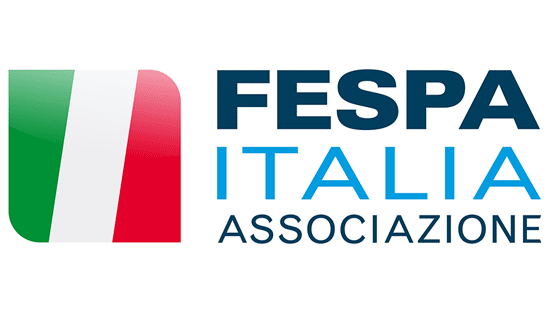How to energy-audit your business, save money and reduce carbon emissions

Environmental consultant Clare Taylor shares how print businesses can implement better energy management and reduce carbon emissions.
What is the cheapest power source for print firms? The one you don’t use. Energy efficiency cuts overheads and is the best first step in addressing carbon emissions. Installing renewables will reduce emissions, but society must reduce overall energy consumption to be able to move away from fossil fuels.
Energy management requires understanding how you use energy, developing programmes for reduction, selecting indicators, and checking progress regularly, and building on what you learn – generally following the ‘plan-do-check-act’ cycle. The formal standard, ISO 50001, follows the same structure as ISO 14001 and is easily integrated into your business.
How you are using energy will vary considerably from business to business, according to location, the nature of the work carried out and the building itself. So start with an energy audit.
How do you use energy in your building?
A thorough review of your building will reveal a lot, even to a non-expert. For most print companies, the biggest drain on energy is building services – air conditioning, heating, lighting and IT. Here are a few ideas for investigating where efficiency improvements can be made at low or no cost.
Calculate your consumption
If you have half-hourly metering, you can check energy use against operating hours, looking for energy being used when you wouldn’t expect it. Then investigate to see where the waste is coming from. Otherwise, take sufficient meter readings to plot consumption, comparing workdays with non-workdays. Additional profiling against productivity and external temperature can tell you even more.
Look at the building itself
Check how well windows and doors fit – are you leaking heat (or cool air)? Are windows shaded from summer sun? Where there are blinds, and do staff close them at night to prevent a build-up of morning heat-up? Draught prevention and window shades cost little but are effective.
Staff behaviour/automated controls
Look at how lighting, heating and air conditioning are used. It’s not unusual to find air conditioning on, but doors open between the air-conditioned areas and the rest of the building, or windows open. Check set points for heating and air conditioning: without a sufficient dead band – at least 5° – both can come on together and compete. Maintain recommended temperatures – if a staff member feels uncomfortable, check for draughts or high solar gain.
Check meeting rooms, corridors, staircases, and communal areas – often lights, heating or air conditioning are on are on even though no one is there.
This waste can be prevented through staff awareness, but often automated controls are easier: presence detectors can switch lights on automatically when someone enters and, when no presence is detected, switch off after a pre-set time. As long, dark corridors and warehouse aisles can be unsettling, using dimming here rather than turning lights off completely can be more people-friendly.
Ambient light sensors can regulate the level of lighting according to the amount of daylight, automatically dimming or turning off lights near windows.
Sensor controls for heating and air conditioning in offices or meeting rooms can be used for manual switch-on, but automatic switch-off if the room is unoccupied after a set time.
And check for computers and monitors left on unnecessarily. Not only are they using energy themselves, but they are adding to the air conditioning load.
Consider your maintenance
Air conditioning is often one of the biggest energy users in print businesses, as well as containing refrigerants with high global-warming potential. Changing to a lower impact system is the best long-term option, but regular maintenance helps in the meantime: check this is taking place.
Whereas certified engineers need to carry out most maintenance, clearing air intake vents of dust, leaves and debris improves their efficiency. If your system is subject to a requirement for regular energy efficiency checks, these reports will usually have good recommendations.
Hot water systems are another area to check outside their regular maintenance, making sure pipe and boiler insulation is in good condition, and look for dripping hot water taps – they can waste a surprising amount of energy.
If you use compressors, check for leaks – even a tiny hole increases energy consumption considerably, and leaving them idling can use as much as 40% of full load.
Investing in energy efficiency
Measuring and monitoring your consumption and, if you don’t have sub-metering, using data loggers for specific energy users, provides the information needed for evaluating bigger, but more effective investments: the benefits for new heating and cooling systems are generally expressed as the percentage of running cost saved. If you’ve not yet upgraded lighting, this is easier to calculate in actual kWh, and the payback periods can be short.
When looking at return on investment, remember the savings come straight off the bottom line, so are effectively increases in profit, and continue year on year, even though they get forgotten about over time.
And finally, when buying anything, check its energy efficiency: sometimes a higher purchase price offers a lower lifetime cost.
Become a FESPA member to continue reading
To read more and access exclusive content on the Club FESPA portal, please contact your Local Association. If you are not a current member, please enquire here. If there is no FESPA Association in your country, you can join FESPA Direct. Once you become a FESPA member, you can gain access to the Club FESPA Portal.
Topics
Recent news

How AI can benefit your data collection
Printers are collecting data about everything from costs to customers and inventory. But how can AI help you to make the most of that?

No minimum order: the growth of DTF decoration
Andy Rogers at Stahls’ UK and Europe, garment decoration firm based in Braintree, UK and Dillingen, Germany, on the cost and speed benefits of direct to film (DTF) printing.

The design democracy: AI, creativity and interior décor
We spoke to Matt Fletcher of John Mark Ltd and Cheryl O’Meara from the Print Pattern Archive about combining age-old techniques with artificial intelligence (AI) to create exciting new motifs for luxury wall coverings.
